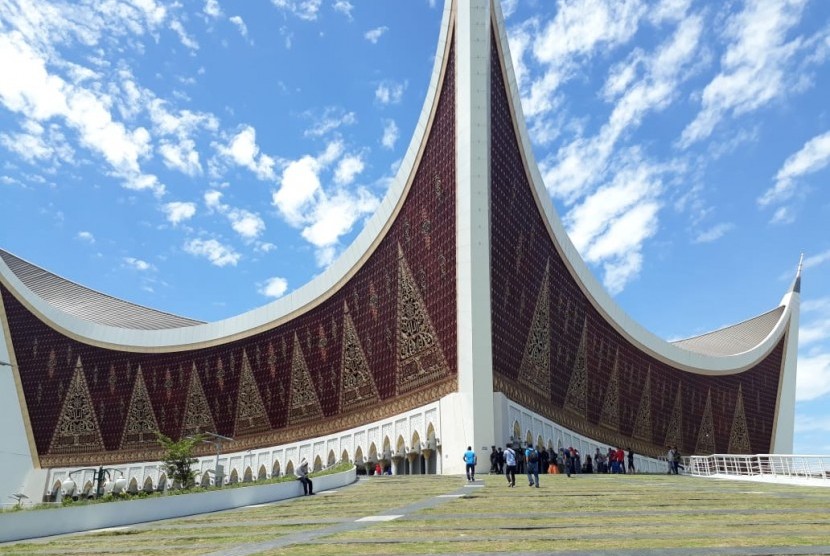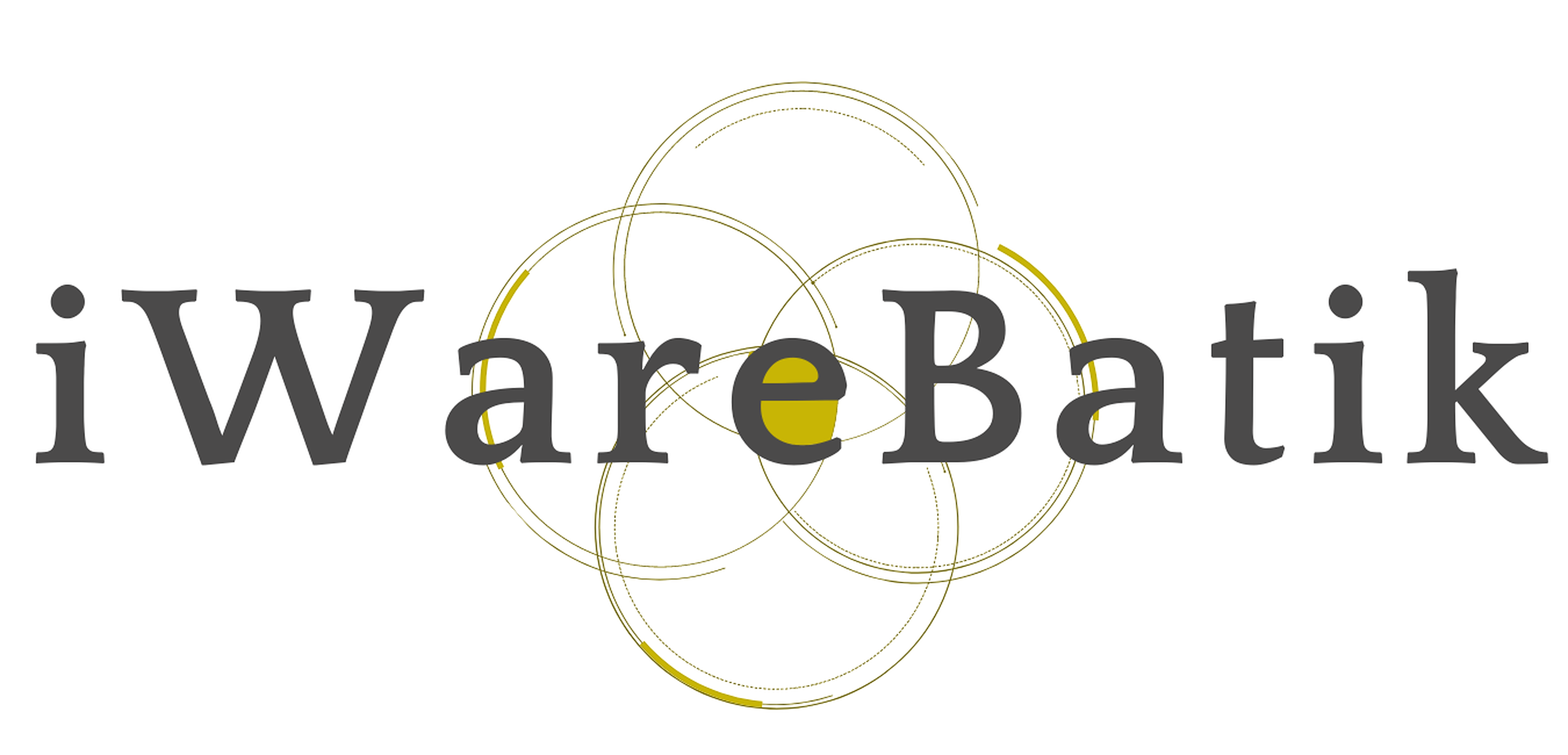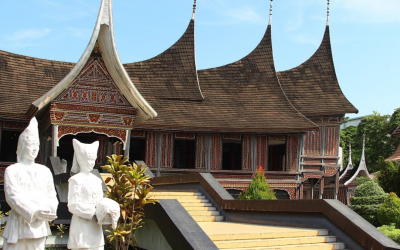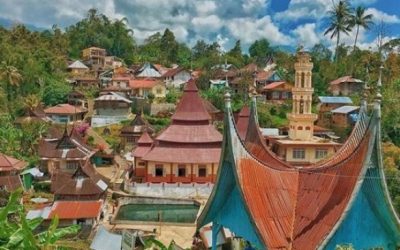Home / Batik Regions – Western Indonesia – Northern Sumatra – West Sumatra / West Sumatra Grand Mosque
Cultural Destination
Embrace the spirit of the place!
West Sumatra Grand Mosque

West Sumatra Grand Mosque (photo: Febrian Fachri)
West Sumatra Grand Mosque
The Great Mosque of West Sumatra is one of the leading religious tourism destinations in the city of Padang. It has an oval-shaped roof on four sides which reflects the shape of the Minang traditional house, the Gadang house. The Great Mosque of West Sumatra also has an 85 meters-height tower. Visitors can use the elevator and enjoy views of the city of Padang from a height of 44 meters. The walls of Great Mosque of West Sumatra are decorated with Minang-styled wooden panels which also serve as ventilations to improve the air circulation inside. The Great Mosque of West Sumatra was built with earthquake-friendly construction. Once the earthquake occurs, the second floor of the mosque can be functioned as a temporary evacuation site.
Tourist Attractions in West Sumatra
Museum of Adityawarman
The museum was built to commemorate Adityawarman, a king of Minangkabau in
Pariangan Cultural Village
Nagari Pariangan as the most beautiful village in the world, according to Travel Budget
West Sumatra
Batik Motifs
Keluak Daun Pakis
The word “Keluak” is a Minang language which means twisted or tangled. The Motif of
Tanah Liek
The word “Tanah Liek” refers to clay in Minang language. It is also known as
Rangkiang
The word “Rangkiang” refers to the rice granary in the Minangkabau language. It symbolizes
Discover
Indonesian
Batik
Motifs
Sekomandi
Its philosophical meaning is the eternal union which refers to a saying “until death do us part”
Besurek Rembulan
This batik illustrates praise for God who created the wonderful universe
Pattimura
Pattimura is the name of an Indonesian hero who fought against colonialism in
Wakatobi
It symbolizes the coastal beauty of the Wakatobi island and the symbol of Patra symbolizes
Dayak Kamang
Kamang motif is generally found in the Dayak tribe shield because it is believed to
Gedhog Kembang Waluh
a combination of Javanese cultural motif of the Majapahit kingdom (XII-XIV century) with
Parang Seling
Parang Seling or “alternating daggers” is a royal batik motif. It is a feminine variant of
Prada Papua
The word “Prada” in the Javanese-Indonesian dialect means a batik textile that
Burung Bidadari
Bidadari birds are endemic birds in Halmahera. This motif represents an
Gamolan
This motif illustrates Gamolan, a bamboo musical instrument of Lampung that is
Kain Cual
Cual textile tradition has existed since the 17th century. The word “Cual” refers to
Dayak Taghol
Dayak Taghol has a distinctive style of four curved lines and small dots. This motif represents
Daun Lada Hitam
The black pepper motif represents the main commodity of Bangka Belitung
Sandeq
Sandeq Boat is a symbol of the maritime importance of the West Sulawesi region. The greatness of
Tabir Tanjung
Tanjung flower is a type of Cherry tree flower, which is commonly found in
Honai
The Honai is inspired by the traditional house of the Papuan community living in
Salakanagara
Salakanagara batik motif illustrates the first kingdom in the Betawi land
Enggang Dayak
Local people beliefs that hornbills are an incarnation of the Commander of the Birds. It has supernatural
Sido Mulyo
Sidomulyo is one of the classical motifs, which is specifically used for the bride’s costume in
Tongkonan
Toraja’s traditional house is called Tongkonan. Tongkonan is a place for
Leuit Sijimat
This motif reflects the daily activities of the Baduy tribe in Banten. The main ornaments of batik motif consist of:
Cengkeh
The clove flower motif is the main commodity of the Tolitoli Regency. This motif represents
Daun Simpor
This motif is inspired by the Simpor plant (Dillenia Suffruticosa) which is a typical
Durian Pecah
Broken Durian motifs depict the foundation of faith. The second half signifies the mastery of
Ukir Sentani
The Ukir motif is a batik motif that is inspired by various traditional Sentani wood carvings
Angsa Duo
According to legend, the Angso duo batik motif is a pair of swans that are believed to have led Princess
Karawo Pinang
Pinang refers to the Palm areca tree. This motif is considered as the original
Mahkota Siger
Siger is the crown of a noblewoman in ancient time. It is a symbol of femininity, strength, and
Gumin Tambun
Based on Hindu mythology, this motif symbolizes lucks, abundant wealth, and
Desa Na Tolu
The Desa Na Tolu characteristic pattern symbolizes the Batak philosophy of existence and
Lontara
The Lontara script itself is a typical ancient script of Bugis and Makassar communities. History records that
Pinawetengan
The Pinawetengan Batik pattern was taken from a prehistoric inscription in
Besurek Rafflesia
The term “Basurek” refers to a textile that contains letters or inscriptions
Gentala Arasy
Built as high as 80 meters, the tower also highlights the historical side of
Gorga Simeol-Meol
The Gorga Simeol-meol is a pattern of plant tendrils. it is regarded as a symbol of longevity and
Bultiya
The word ‘Bultiya’ is an acronym of the three major tribes in North Kalimantan, namely
Gigi Haruan Lidi
The Gigi Haruan Lidi motif is taken from the name of the cork fish and is a symbol of
Hiu Taliyasan
Indonesia is also home to the world’s largest fish, the whale shark (Rhincodon typus). Hiu Taliyasan refers to
Bomba Mawar
This motif means sacred love for family, kingdom, and God; It also illustrates
Taiganja
Taiganja is a precious gold pendant that shows the social status of the Kaili family. It is
Tubo Kelapa
Coconut tree is a symbol of a good character and strong mentality. It illustrates the more success a person, the more
Pala Salawaku
This motif illustrates the unique weapons of the Maluku region, namely
Kaganga Tanah Rejang
If Batik Besurek combines Arabic calligraphy motifs, then the Kaganga batik takes
Merak Ngeram
The hatching peacock motif has a very deep meaning which refers to the sacrifice and
Gonggong Siput
Gonggong (Strombus Turturella) is one type of sea snail found around
Bekantan Pakis
This motif represents Pakis Haji (Polystichum setiferum), an endemic plant in
Gonggong Beruntun
This motif illustrates that a person should maintain a positive attitude and
Karawo Mahkuta
Mahkuta refers to Gorontalo’s traditional crown. It represents noble characters of
Tengkawang Ampiek
With its many advantages, the Dayaks use this leaf in ritual ceremonies. This plant is a symbol of
Jumputan Bintang
The word Jumputan means the tie-dye technique, while the word “Bintang” refers to
Biji Kopi
The coffee seeds motif illustrates the pride of local coffee specialities in
Daun Sirih
This motif illustrates betel leaves that are used by Lombok communities as traditional
Pati-Pati Pinehiku
It symbolizes the hierarchy in society and the social status of the Mekongga
Pucuk Rebung Riau
Pucuk Rebung symbolizes heart determination in achieving goals, good luck, and
Singayaksa
The Singayaksa motif comes from the name of a place where Sultan Hasanuddin used to
Gurdo Solo
Gurdo or garuda bird is the mount of the Indian god Vishnu. As the Sun Bird,
Wirasat
Wirasat or divine inspiration is a gift from God. This inspiration is symbolized by
Bale Lumbu
This motif signifies the welfare of the ancient Sasak society. Bale also symbolizes the
Srimanganti
The name of the Srimanganti motif is derived from Palace’s hallway that connects to
Awan Berarak
Awan Berarak is a combination of Dayak motifs and Malay patterns. The word ‘Awan Berarak’ means the
Bintik Tujuh
The Bintik Tujuh (Seven Dots) motif has 7 white spots and green color gradation as
Teguh Bersatu
This batik motif shows the strength of the people of Kupang. It also represents a sense of
Gajah Way Kambas
The motif illustrates the Lampung’s natural reserve, the Way Kambas. it also symbolizes
Kawung
The Kawung motif was created by Sultan Agung Hanyokrokusumo (1593 – 1645) as a symbolic gift for
Tenun Bima
The motifs are adopted from Bima woven textile. This pattern has received a great
Manguni Minahasa
Manguni is identified as the symbol of the Minahasa people. Manguni is known as a
Malinau Cultural Festival
You will witness a unique competition that might not be found other than in
Pohon Hayat (Tree of Life)
The Batik motifs in Lampung are dominated by the acculturation of Buddhist and
Parang Rusak
Another meaning behind this motif is an unconquerable spirit, symbolized by
Rangkiang
The word “Rangkiang” refers to the rice granary in the Minangkabau language. It symbolizes
Tampuk Manggis Sasirangan
The motif illustrates the philosophy of the mangosteen fruit, which is
Ake Patra
Ake is related to the divinity and the composition of the universe. It is a symbol of
Ikan tambal
The word “Ikan” refers to fish. The philosophical meaning of Ikan Tambal means is
Kerawang Tegak Aceh
The Vertical Upright (Kerawang Tegak) Motif symbolizes a person who has a strong


